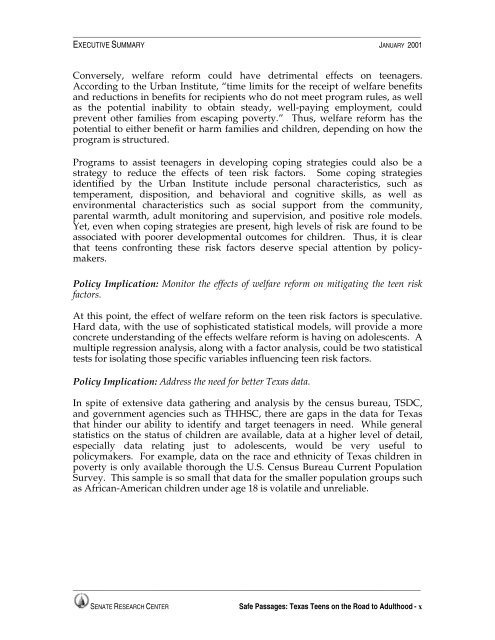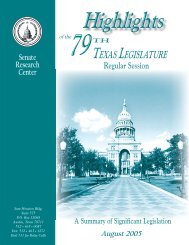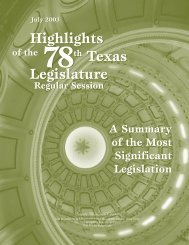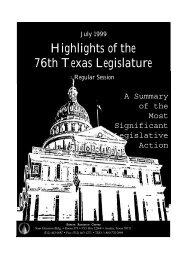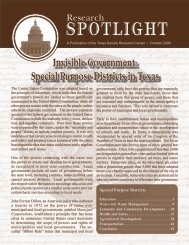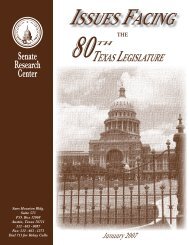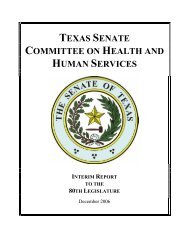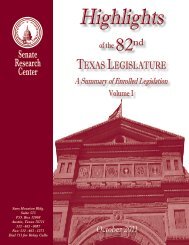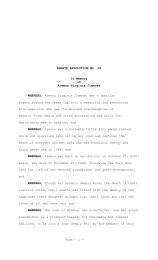Texas Teens Cover - Senate
Texas Teens Cover - Senate
Texas Teens Cover - Senate
Create successful ePaper yourself
Turn your PDF publications into a flip-book with our unique Google optimized e-Paper software.
______________________________________________________________________________________<br />
EXECUTIVE SUMMARY JANUARY 2001<br />
Conversely, welfare reform could have detrimental effects on teenagers.<br />
According to the Urban Institute, “time limits for the receipt of welfare benefits<br />
and reductions in benefits for recipients who do not meet program rules, as well<br />
as the potential inability to obtain steady, well-paying employment, could<br />
prevent other families from escaping poverty.” Thus, welfare reform has the<br />
potential to either benefit or harm families and children, depending on how the<br />
program is structured.<br />
Programs to assist teenagers in developing coping strategies could also be a<br />
strategy to reduce the effects of teen risk factors. Some coping strategies<br />
identified by the Urban Institute include personal characteristics, such as<br />
temperament, disposition, and behavioral and cognitive skills, as well as<br />
environmental characteristics such as social support from the community,<br />
parental warmth, adult monitoring and supervision, and positive role models.<br />
Yet, even when coping strategies are present, high levels of risk are found to be<br />
associated with poorer developmental outcomes for children. Thus, it is clear<br />
that teens confronting these risk factors deserve special attention by policymakers.<br />
Policy Implication: Monitor the effects of welfare reform on mitigating the teen risk<br />
factors.<br />
At this point, the effect of welfare reform on the teen risk factors is speculative.<br />
Hard data, with the use of sophisticated statistical models, will provide a more<br />
concrete understanding of the effects welfare reform is having on adolescents. A<br />
multiple regression analysis, along with a factor analysis, could be two statistical<br />
tests for isolating those specific variables influencing teen risk factors.<br />
Policy Implication: Address the need for better <strong>Texas</strong> data.<br />
In spite of extensive data gathering and analysis by the census bureau, TSDC,<br />
and government agencies such as THHSC, there are gaps in the data for <strong>Texas</strong><br />
that hinder our ability to identify and target teenagers in need. While general<br />
statistics on the status of children are available, data at a higher level of detail,<br />
especially data relating just to adolescents, would be very useful to<br />
policymakers. For example, data on the race and ethnicity of <strong>Texas</strong> children in<br />
poverty is only available thorough the U.S. Census Bureau Current Population<br />
Survey. This sample is so small that data for the smaller population groups such<br />
as African-American children under age 18 is volatile and unreliable.<br />
______________________________________________________________________________________<br />
SENATE RESEARCH CENTER<br />
Safe Passages: <strong>Texas</strong> <strong>Teens</strong> on the Road to Adulthood - x


